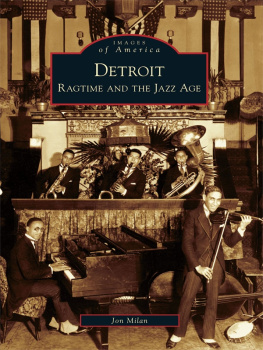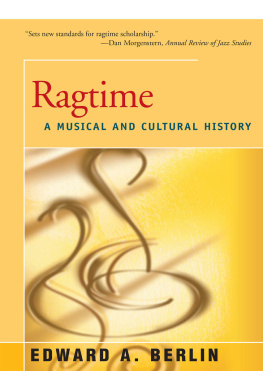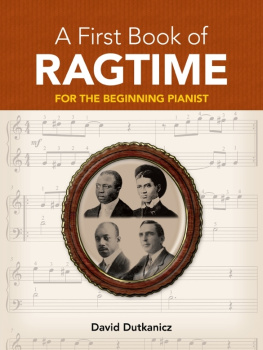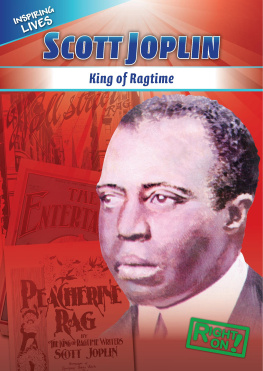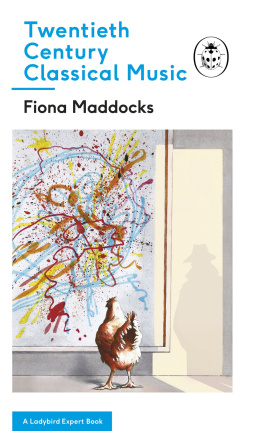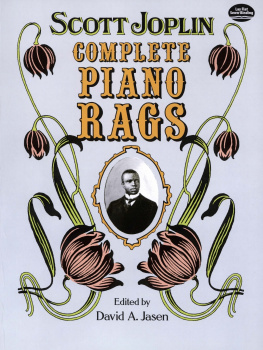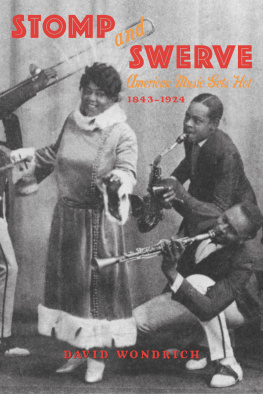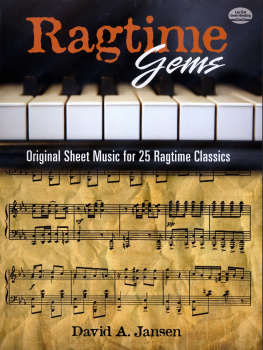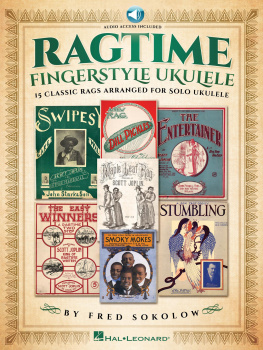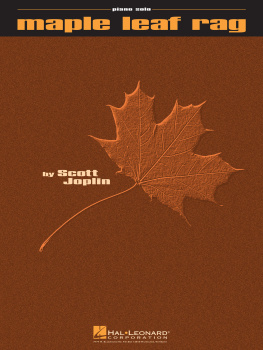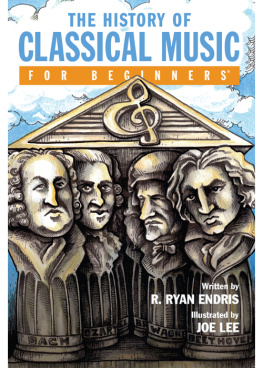King of Ragtime
KING OF RAGTIME
Scott Joplin and His Era
Edward A. Berlin

Oxford University Press
Oxford New York
Athens Auckland Bangkok Bombay
Calcutta Cape Town Dar es Salaam Delhi
Florence Hong Kong Istanbul Karachi
Kuala Lumpur Madras Madrid Melbourne
Mexico City Nairobi Paris Singapore
Taipei Tokyo Toronto
and associated companies in
Berlin Ibadan
Copyright 1994 by Edward A. Berlin
First published in 1994 by Oxford University Press, Inc.,
198 Madison Avenue, New York, New York 10016
First issued as an Oxford University Press paperback, 1995
Oxford is a registered trademark of Oxford University Press
All rights reserved. No part of this publication may be reproduced, stored in a retrieval system, or transmitted, in any form or by any means, electronic, mechanical, photocopying, recording, or otherwise, without the prior permission of Oxford University Press.
Library of Congress Cataloging-in-Publication Data
Berlin, Edward A.
King of Ragtime : Scott Joplin and His Era / Edward A. Berlin,
p. cm. Includes bibliographical references and index.
ISBN 0-19-508739-9
ISBN 0-19-510108-1 (Pbk.)
1. Joplin, Scott, 18681917.
2. ComposersUnited StatesBiography.
I. Title. ML410.J75B5 1994
780.92dc20 9328318
ILLUSTRATION CREDITS
Fisk University Librarys Special Collections: Queen City Cornet Band (p. 21), The Maple Leaf Club (p. 39), and Scott Joplin (p. 190).
State Fair Community College Ragtime Archives, Sedalia, Missouri: Maple Leaf Club business card (p. 39).
Pierpont Morgan Library: Maple Leaf Rag contract (p. 55). Owned by James J. Fuld.
Trebor Jay Tichenor: Williams and Walker print (p. 61).
State Historical Society of Missouri: Eleanor Stark (p. 73), Tom Turpin (p. 91), and Scott Joplin photograph from the St. Louis Globe-Democrat (p. 95).
Patricia Lamb Conn: Joseph F. Lamb (p. 174).
Maple Leaf at beginning of sidebars, by Paul Pascal.
Authors photograph by the Department of Art and Photography, Queensborough Community College.
10 9 8 7 6 5 4 3 2 1
Printed in the United States of America
on acid-free paper
Dedicated to the pioneers of the ragtime revival,
those who rekindled interest in
a great American music:
Wally Rose, Rudi Blesh,
Harriet Janis, and Max Morath
Preface
Music publishing turned a corner in the 1890s. It became more daring, more colorful, and far more profitable. Marketing of popular music reached unprecedented heights and Tin Pan Alley was born.
Much popular music had a maudlin cast. The immense success of Charles K. Harriss After the Ball in 1892 demonstrated the publics love of pathos. Songwriters responded to the demand with such ballads as She May Have Seen Better Days (1894), Those Wedding Bells Shall Not Ring Out (1896), Take Back your Gold (1897), and She Is More To Be Pitied Than Censured (1898).
But while the public gloried in this self-indulgent and extreme sentimentality, a brash, abrasive, and decidedly zippier style was moving to center stage. This was ragtime, both an irrepressible, swinging dance music and a colloquial, cynical song form. In its vocal guise, it was the antithesis of the precious, saccharine parlor song, telling not of excessive sensibilities, self-sacrifice, and honor, but of black men and women in ludicrous, and frequently demeaning, situations.
Ragtime was at first dismissed as a curious expression of black Americans and stage minstrels, a vulgar fad that would quickly disappear. But as it evolved and adapted itself to the white majority, it took root and became sufficiently broad to embrace both Scott Joplins Maple Leaf Rag and Irving Berlins Everybodys Doing It. Ragtime dominated American popular music for the two decades from the late 1890s until the late 1910s and was this countrys first uniquely national style of music. Out of it came succeeding generations of popular song and jazz.
Ragtime receded from public consciousness during the 1920s and 1930s. By the year 1941, it had been dormant for two decades and was mostly forgotten. Occasionally, people of older generations used the term as a synonym for swing or jazz. A few record collectors recognized ragtime as a distinct style, but relegated it to a minor role in the evolution of American music, that of a precursor, a stage-setter for jazz.
In the 1940s, jazz was on the move. A new generation of jazz musicians was looking for its voice, seeking an alternative to big-band swing. In New York, inventive young musicians developed bebop, something entirely new. In California, musicians oriented toward the old tried to refresh jazz by returning to its roots. In the process, they discovered ragtime. These were the first stirrings, the awakening of a music that had faded in 1917.
By 1949, ragtime had become a subset of traditional jazz, also referred to as Dixieland. Rudi Blesh, an outspoken advocate for the earlier styles of jazz, reissued this music on his small Circle Records label. In his book Shining Trumpets (1946), he proclaimed the virtues of older, purer, and blacker jazz and decried the commercial sounds of white-oriented swing. He also attacked black musicians who, by his standards, had betrayed their African-American roots.
Finding that music historians had overlooked ragtime, Blesh collaborated with Harriet Janis, his partner at Circle Records, to fill the gap. In less than a year-and-a-half, they turned out a masterpiece: They All Played Ragtime. The book was both the first social history of the ragtime world and the first biography of Scott Joplin.
Blesh and Janis wrote a book that overflows with enthusiasm, one that has thrilled and inspired legions of fans in the decades following its publication. They had the foresight and good sense to go beyond library research, to interview more than one hundred surviving participants of the ragtime scene. They told a tale that had never before been recounted, told it passionately and with authority. The reader, in finishing the volume, knew the story of ragtime and the story of Scott Joplin.
For all its deserved praise, the book has serious flaws. Some shortcomings are obvious. Since it was written quickly, its organization is maddeningly haphazard. The authors, lacking formal historical training or a sense for scholarly niceties, had little concern for presenting evidence. Where they offered documentation, they frequently confused their sources. When they lacked information, they had no qualms about fictionalizing.
Less obvious is a problem concerning the books most distinctive feature: the testimony of those who were still able to bear witness. This testimony is invaluable, a source that cannot be duplicated today. For seeking out the original ragtimers and preserving their words, a task that occurred to no one else, Blesh and Janis are forever honored.
But testimony is not an unmixed blessing. Skilled investigators quickly learn that those being interviewed, in a misdirected effort to help, may slant their report to what they believe the interviewer wants to hear. Or in probing their memories for events of some forty or more years earlier, they may make mistakes, perhaps confuse people and events, compress years.
Take the example of Eubie Blake (18831983). Blake was a major player and witness of the ragtime years. In the last twenty years of his life, as interest in ragtime increased, he was called upon innumerable times to recall stories. To the end of his long life his mental faculties remained remarkably acute, and no one would accuse him of dishonesty. But he was also a showman, interested in a good response. As he repeated stories, the accounts frequently changed somewhat, becoming more elaborate and entertaining.
Next page

